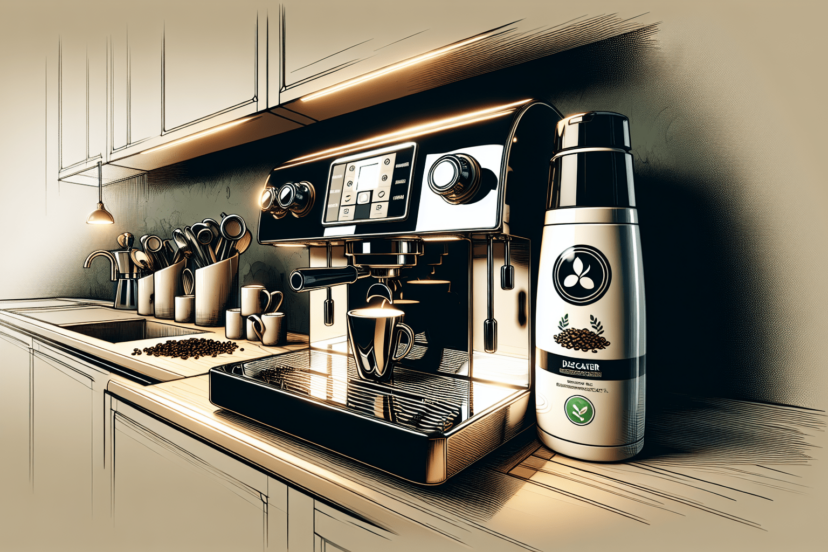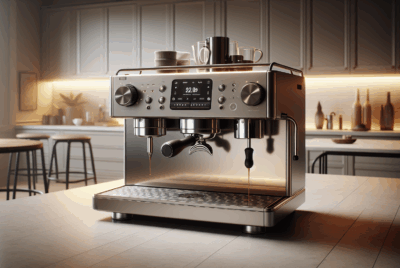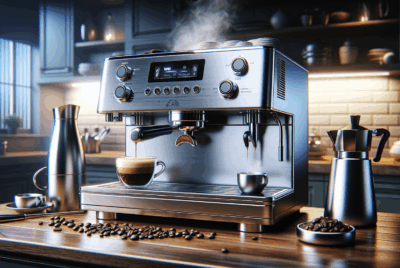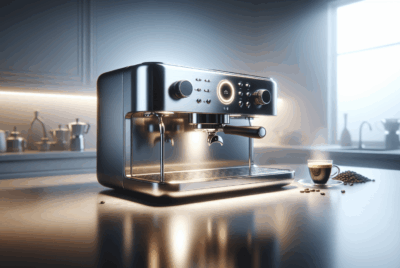How to Choose the Best Espresso Machine Descaler
As an Amazon Associate, I earn from qualifying purchases, at no additional cost to you. Disclaimer
Have you ever wondered why your espresso machine doesn’t quite produce the same rich flavor and crema it once did? One often overlooked factor is the buildup of scale within your machine, a common issue when using water rich in minerals. Choosing the right espresso machine descaler can significantly extend the life of your machine while returning the quality of your coffee to its original excellence.
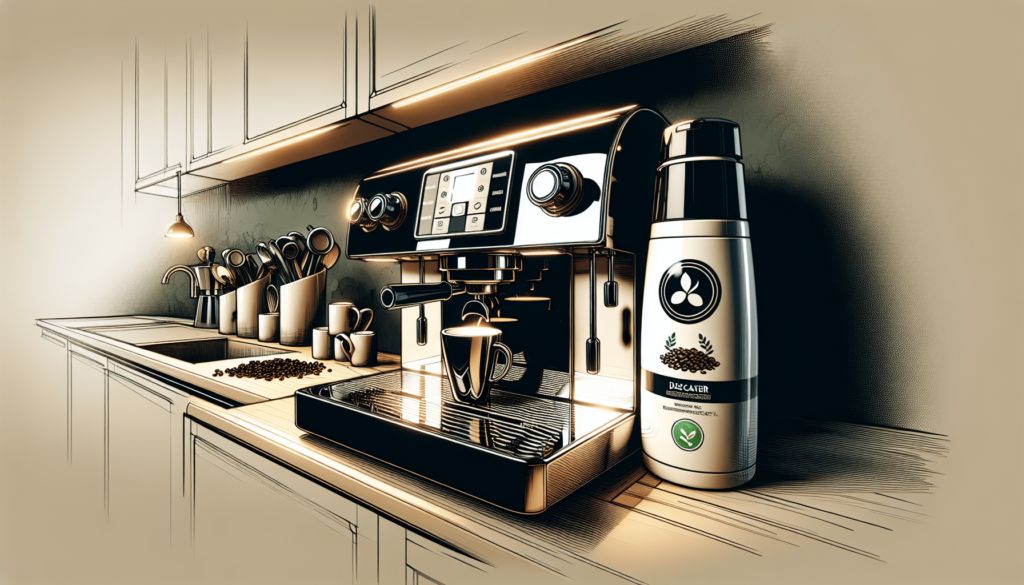
Click Here to Brew Café-Quality Coffee
Understanding Scale and Its Impact on Your Espresso Machine
To comprehend why descaling is essential, you must first understand what scale is and how it affects your espresso machine. Scale is a buildup of mineral deposits, mainly calcium and magnesium, that accumulate in your machine over time and can cause a range of issues.
The Formation of Scale
Every time you use your espresso machine, water passes through it. If this water contains minerals (hard water), it can leave deposits inside your machine. When heated, these mineral deposits harden and form scale. The severity of scale buildup depends on several factors, including the frequency of use and the hardness of your local water.
Effects of Scale on Espresso Machines
Scale can decrease the efficiency of your espresso machine and affect the taste of your coffee. Here’s how:
- Reduced Efficiency: Scale acts as an insulator, causing your machine to use more energy to heat water, which in turn leads to higher electricity bills.
- Poor Coffee Quality: Scale can affect water flow and pressure, leading to inconsistent extraction and altering the taste and aroma of your coffee.
- Machine Damage: Over time, scale buildup can lead to clogging and damage vital components of your machine, increasing the risk of potential breakdowns.
Understanding these effects illustrates why regular descaling is critical for maintaining both your coffee’s quality and your machine’s longevity.
What to Look For in an Espresso Machine Descaler
When searching for the best descaler, several key factors should guide your decision. These include the effectiveness of the descaler, its compatibility with your machine, its ease of use, safety for both the machine and your health, and whether you prefer a natural or chemical solution.
Effectiveness
The primary purpose of any descaler is to effectively break down and remove scale. Ensure that the product you choose efficiently cleans your machine and restores it to optimal operation.
Compatibility with Your Espresso Machine
Not all descalers suit every espresso machine. Some machines have specific cleaning requirements, so it’s vital to select a descaler that’s compatible with yours. Check your machine’s manual or manufacturer’s website for recommended products.
Ease of Use
A descaler should be straightforward to use, requiring minimal time and effort. Look for products with clear instructions and uncomplicated procedures.
Safety
Descaler use should be safe for you and your machine. Consider products that are non-toxic and biodegradable. Ensure they don’t leave harmful residues that could affect your health or the taste of your coffee.
Natural vs. Chemical Solutions
You have the option of choosing between natural and chemical descalers. Natural options, often made with ingredients like citric acid or vinegar, are eco-friendly and non-toxic. Chemical solutions may be more powerful or quicker, but they can be harmful if misused. Balance your priorities regarding effectiveness, safety, and environmental impact when making your choice.
Click Here to Get Brewing Tips & Tricks
Comparing Different Types of Descalers
Not all descalers are created equal, and various types offer different benefits and drawbacks. Here’s a breakdown to help you decide what might work best for your needs.
| Type of Descaler | Pros | Cons |
|---|---|---|
| Liquid Descalers | Easy to use, often ready-made | Can be messier, sometimes more costly |
| Powder Descalers | Generally cheaper, long shelf life | Requires mixing, can be less convenient |
| Tablets | Pre-dosed, easy to handle | May not dissolve easily, often pricier |
| Natural Solutions | Non-toxic, eco-friendly | May require more frequent use |
Liquid Descalers
Liquid descalers are pre-mixed solutions, making them extremely convenient. They are typically easy to use and require no preparation, but they can sometimes be messy or cost more per use than other options.
Powder Descalers
Powder descalers are often more budget-friendly and have a longer shelf life than liquid options. However, they require you to mix them with water, which can be slightly less convenient and may lead to dosage errors if not done correctly.
Tablets
Tablet descalers simplify the descaling process by providing pre-measured doses. They are easy to handle and reduce the risk of overuse. Some tablets, however, might not dissolve entirely, leading to inconsistent results.
Natural Solutions
Natural descalers often rely on substances like citric acid or vinegar. These solutions are non-toxic and environmentally friendly but may not be as effective on heavy or long-standing scale buildup and often need to be used more frequently.
Step-by-Step Guide to Descaling Your Espresso Machine
Regardless of the descaler you choose, the descaling procedure typically involves several key steps. This process ensures that your espresso machine remains in top condition and that you enjoy the best possible coffee experience.
Step 1: Prepare Your Machine
Begin by switching off your espresso machine and allowing it to cool if it has been recently used. Consult your machine’s manual for any specific preparation instructions.
Step 2: Mix the Descaler
If you’re using a liquid or a pre-mixed tablet, make sure it’s ready for use. For powder descalers, mix the directed amount with water according to the instructions to form a solution.
Step 3: Run the Descaler Through the Machine
Pour the descaler solution into the water tank. Turn on the machine and run the descaler through the system as if you were brewing coffee. This means activating the brew cycle without any coffee in the machine, allowing the solution to work through the internals. Make sure to run the entire tank of solution through the machine.
Step 4: Rinse and Repeat if Necessary
After running the descaler through your machine, it’s crucial to rinse thoroughly to remove any remaining solution. Fill the water tank with clean water and run it through the machine two or three times until you’re certain all residues have been removed. Repeat this process as recommended for your machine’s maintenance needs.
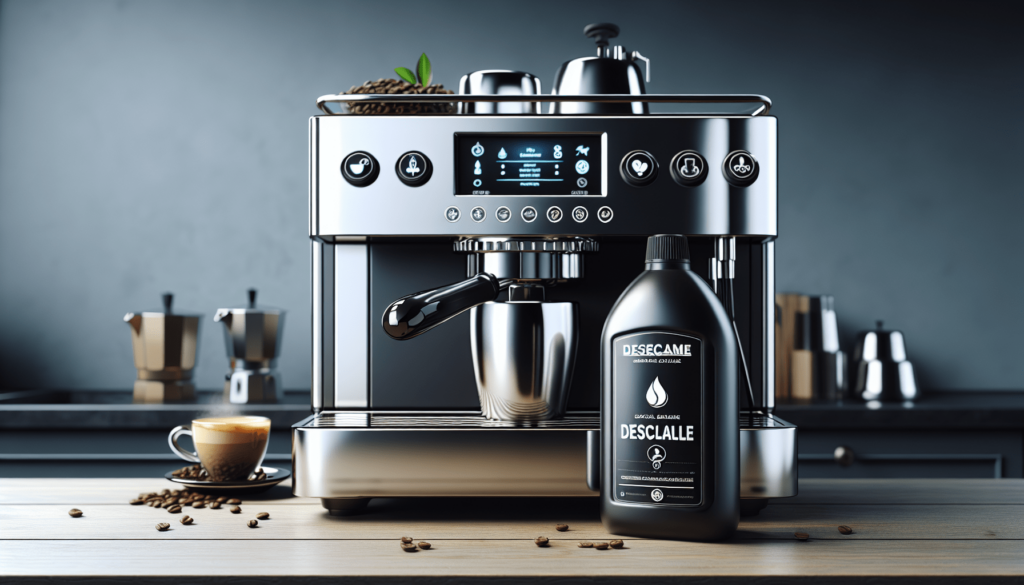
Click Here to Maximize Your Coffee Flavor
Additional Tips for Maintaining Your Espresso Machine
Beyond regular descaling, a few additional practices can help keep your machine running smoothly and extend its life.
Use Filtered Water
Using filtered or soft water can reduce mineral deposits, meaning less frequent descaling. Some machines come with built-in water filters, but using external water filtration can also be beneficial.
Regular Cleaning
Regular cleaning of your machine’s components (such as the group head, frothing wand, and drip tray) can prevent coffee oils and debris from building up and affecting performance and flavor.
Routine Servicing
Consider scheduling professional servicing for your machine, particularly if it’s a high-end model, to catch any issues before they become severe and ensure it is properly calibrated.
Conclusion
Finding the best espresso machine descaler hinges largely on understanding your specific needs, preferences, and the requirements of your machine. By ensuring you regularly descale and maintain your espresso machine, you can enjoy consistently high-quality coffee and a long-lasting appliance. Remember, a clean machine is key to achieving that perfect cup of espresso every time.

